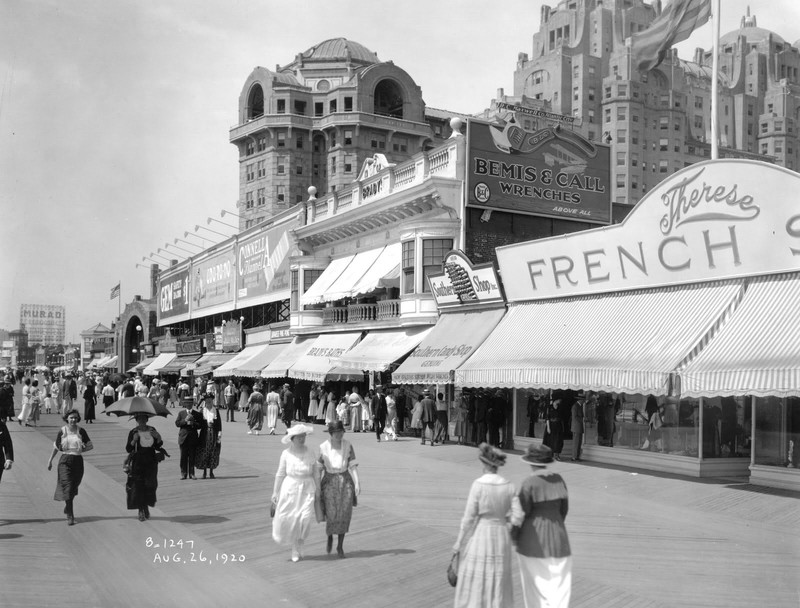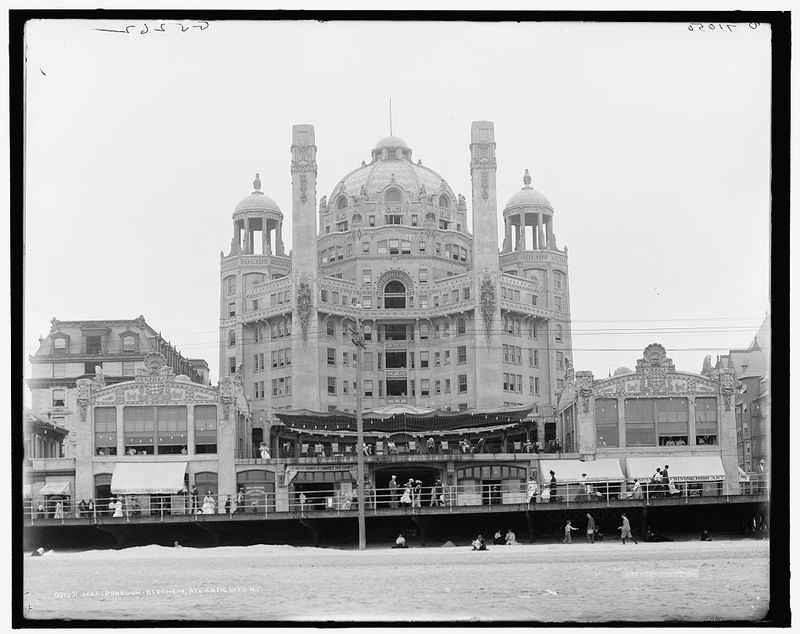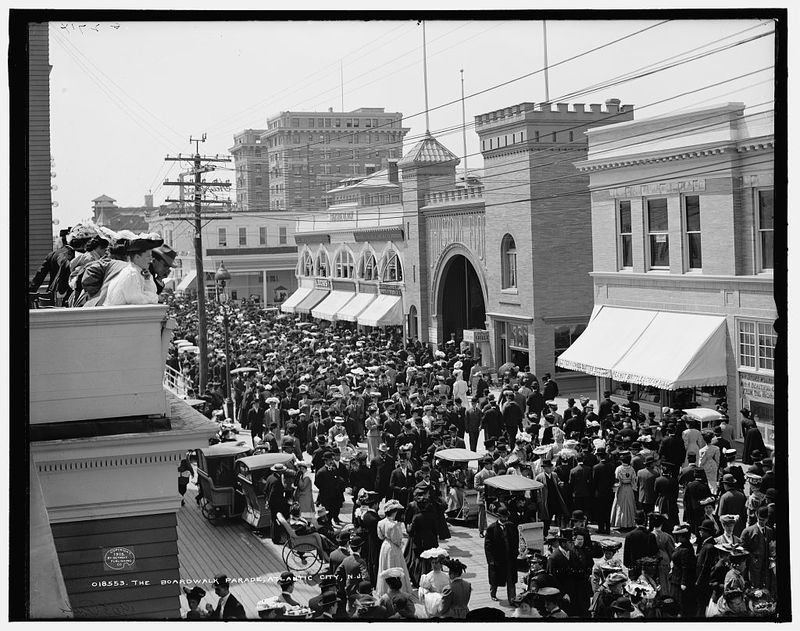The Boardwalk: A Social Infrastructure

The Atlantic City Boardwalk, August 26, 1920

The Marlborough-Blenheim Hotel

The crowds on the Boardwalk, ca. 1905
What began as a desperate effort by two frustrated businessmen to curb the infiltration of sand into their respective places of business, the Atlantic City Boardwalk quickly became an iconic yet evolving reflection of nineteenth century America’s burgeoning leisure culture. In 1870, hotel owner Jacob Keim and railroad conductor Alexander Boardman, backed by $5,000 of municipal funds, conceived and oversaw the construction of a rudimentary wood plank structure eight feet wide and one mile long.[1]
Despite a series of destructions caused by storms and high winds, this temporary structure was rebuilt and improved upon with each iteration. In 1894, the Boardwalk was expanded to twenty-four feet wide, elevated eight feet above the sand, and fives miles in length.[2] By 1909, the seaside esplanade cost the municipality nearly $300,000 and was elevated on steel pilings ten to fifteen feet above the strand, ranged from twenty to sixty feet wide, reached seven miles in length, and was “brilliantly lighted every evening” by incandescent electric lamps.[3]
The initial structures effectively contained the sand beneath them and relieved both the growing crowds of the discomfort of sandy shoes as well as business owners of the equally annoying responsibility of clearing accumulated deposits of sand from hotel lobbies and passenger railcars. However, by the twentieth century, each reconstruction signaled not only the wooden boulevard’s increasing physical size but also the proportional growth of its social influence.
The businesses, stores, attractions, and hotels that drew increasing numbers of visitors from the Pennsylvania, New Jersey, and New York metropolitan areas represent the Boardwalk’s transition from a practical to social structure. While the oceanfront city achieved early success by promoting the restorative qualities of the seaside environment as a healthful retreat from the congestion of the industrial city, middle-class tourists increasingly arrived seeking luxurious and exotic experiences, which were manifested in the Boardwalk's opulent architecture and singular attractions.
[1] Bryant Simon, Boardwalk of Dreams: Atlantic City and the Fate of Urban America (New York: Oxford University Press, 2004), 22.
[2] Pennsylvania Railroad Company, Atlantic City, N.J., The Great American Sea-Side Resort: A Brief Sketch of Its Resources, Advantages and Railway Facilities. (Philadelphia: Allen, Lane & Scott, 1894), 9, http://hdl.handle.net/2027/njp.32101072334038.
[3] America’s Greatest Resort Atlantic City, New Jersey, 5th ed. (Atlantic City, N.J.: Atlantic City Publicity Bureau, 1909), 13, http://hdl.handle.net/2027/loc.ark:/13960/t34176h5g.